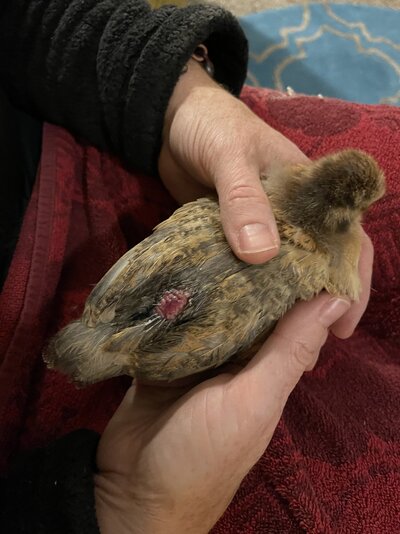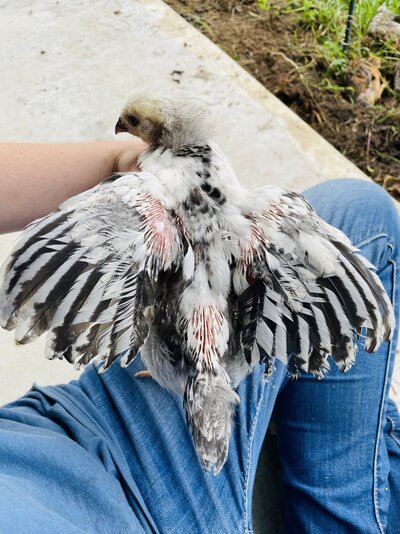tharedhead
In the Brooder
- Oct 19, 2021
- 12
- 21
- 46
I have seven chicks in a sizable brooder. Yesterday my daughter found one with a bloody back. I think it’s possibly too early for pecking order and thought maybe this one had its pin feathers plucked and the other chicks went crazy when they saw the blood.
It didn’t appear to be just one as they were all interested in the blood.
I cleaned the wound (and put pain relief-free antibiotic) and tried to separate them last night, but the poor chick was in distress at being isolated. Since it was late, I shut the lights decided to let her sleep there, but don’t want the chicks to develop a taste for this.
i was going to set her up this morning with a separate lamp in another brooder.
i feel bad she’s alone and still think she should be next to the other brooder, so she can more easily be reintroduced. Or should she be out of sight? The ambient temperature will be around 60 in the house. I have to leave this morning for a couple hours, so they will be unattended.
In the main brooder: i have a treat in there, I thought I’d pull out. I heard adding a minute amount of mineral salt to their water would help. They have plenty of space to bathe. They have a heat tray they rest under to keep warm and all their feathers are really coming in nicely (I really don’t want to use the heat lamp in the smaller medical brooder, but it’s expected to be 67 degrees outside today). I think they have enough space for the seven of them ~8sq ft.
Not sure it’s relevant, but this chicken has kind of a raspy peep and always has, I was worried she was sick, but she behaves normally otherwise.
the injury site this morning is dried and improved substantially.
thoughts and ideas appreciated!
thanks.
It didn’t appear to be just one as they were all interested in the blood.
I cleaned the wound (and put pain relief-free antibiotic) and tried to separate them last night, but the poor chick was in distress at being isolated. Since it was late, I shut the lights decided to let her sleep there, but don’t want the chicks to develop a taste for this.
i was going to set her up this morning with a separate lamp in another brooder.
i feel bad she’s alone and still think she should be next to the other brooder, so she can more easily be reintroduced. Or should she be out of sight? The ambient temperature will be around 60 in the house. I have to leave this morning for a couple hours, so they will be unattended.
In the main brooder: i have a treat in there, I thought I’d pull out. I heard adding a minute amount of mineral salt to their water would help. They have plenty of space to bathe. They have a heat tray they rest under to keep warm and all their feathers are really coming in nicely (I really don’t want to use the heat lamp in the smaller medical brooder, but it’s expected to be 67 degrees outside today). I think they have enough space for the seven of them ~8sq ft.
Not sure it’s relevant, but this chicken has kind of a raspy peep and always has, I was worried she was sick, but she behaves normally otherwise.
the injury site this morning is dried and improved substantially.
thoughts and ideas appreciated!
thanks.
Attachments
Last edited:





